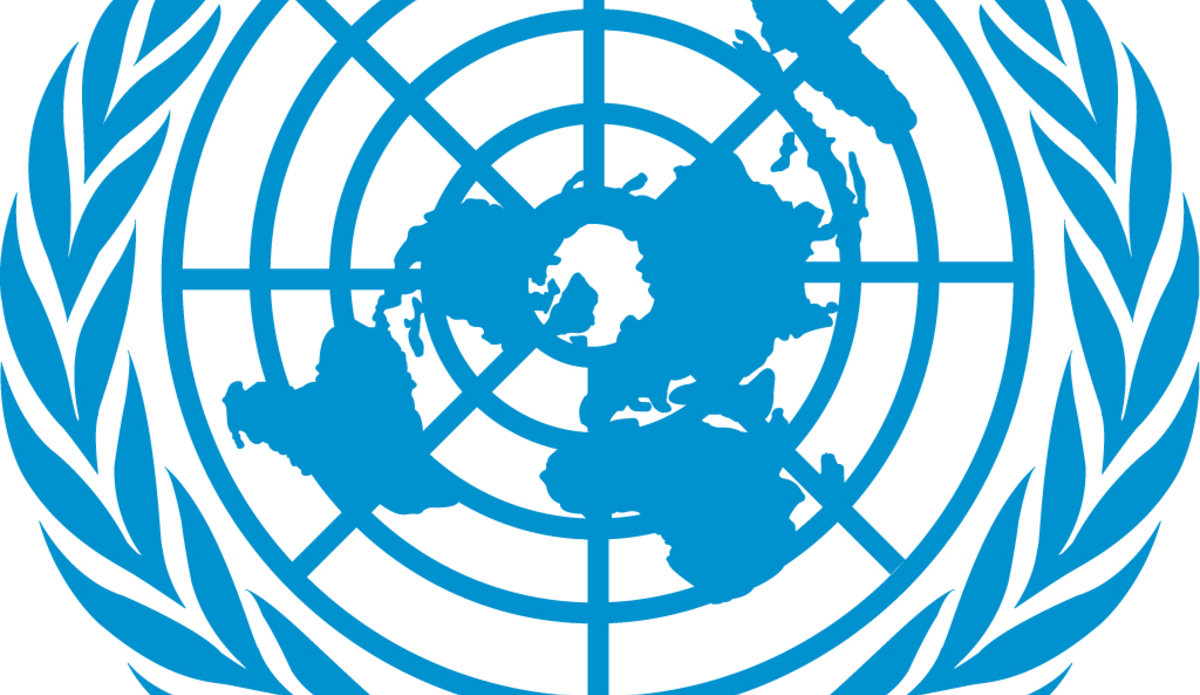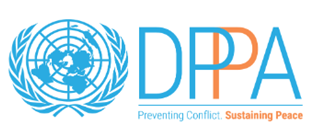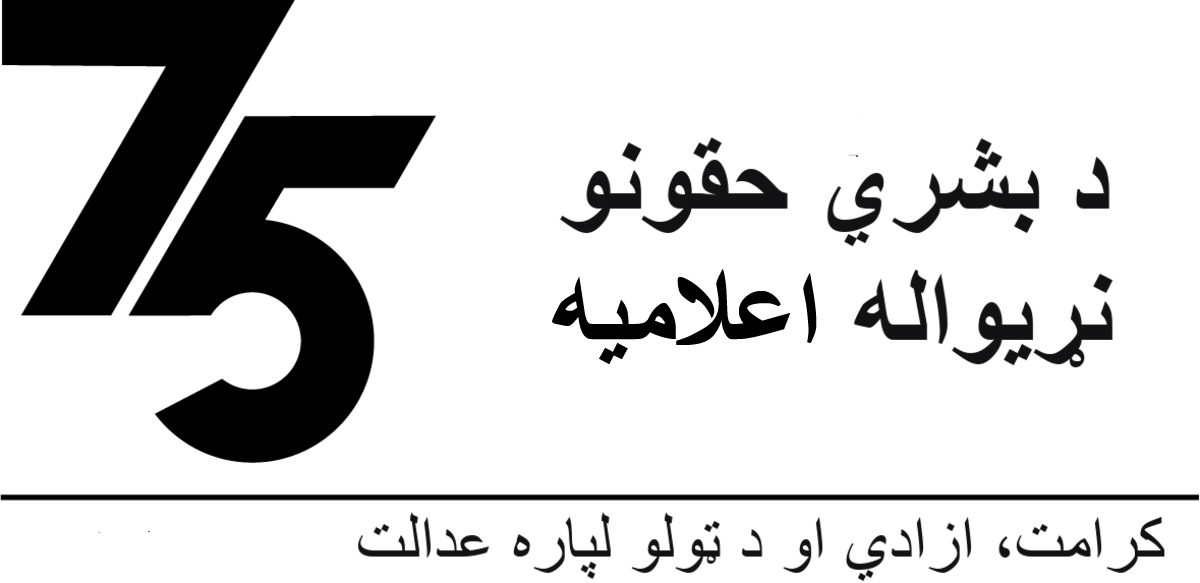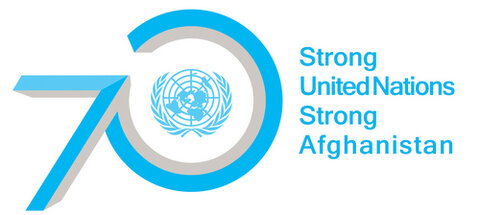Press conference with UNAMA and UNICEF
KABUL - Transcript of press conference by Dan Toole, UNICEF Regional Director for South Asia, Catherine Mbengue, UNICEF Country Representative for Afghanistan and Nazifullah Salarzai from UNAMA Spokesperson’s Office. Dari - Pashto
UNAMA: Ladies and gentlemen, Salam Alaikum. Good afternoon everyone and welcome to our press conference today. I am Nazifullah Salarzai from UNAMA Spokesperson’s Office. Today sees UNICEF launch its global report on the State of the World’s Children. We are joined today by Mr. Dan Toole, UNICEF Regional Director for South Asia and Ms. Catherine Mbengue, UNICEF Country Representative for Afghanistan. We will have a few opening remarks then we will take your questions. Please also bear in mind that the report itself is embargoed until 17:30 Kabul local time.
UPDATE ON UN HUMANITARIAN ASSISTANCE IN THE WESTERN REGION
The last few weeks have brought unexpected heavy snowfall and sub-zero temperatures across Afghanistan, particularly in the western region.
Led by the government’s provincial combined disaster management teams different actors including UNAMA and other UN agencies, NGO’s, PRTs [provincial reconstruction teams] and ISAF crisis teams are working together to prioritise the delivery of humanitarian assistance to affected communities.
As of today, the authorities in western Afghanistan have reported that 205 people have died and over 42,000 livestock have been lost, mainly in Herat, Badghis and Ghor provinces.
In terms of the response to this winter crisis 725.5 tons of food have already been delivered to vulnerable people in Herat and Badghis provinces by the
World Food Progamme – 1,000 blankets, 5,500 sweaters, 2,500 tarpaulins, 2,000 plastic sheets and emergency kits were provided by other UN agencies in Herat, Farah and Badghis provinces.
We continue to work closely with all key players on the ground to ensure that assistance continues to arrive for those people who need help the most.
You can find more details about this assistance, together with the assistance prepositioned by WFP, UNICEF, WHO and UNHCR in the four provinces before the onset of this winter crisis, on the side table.
UNICEF COUNTRY REPRESENTATIVE IN AFGHANISTAN: First of all thank you, women and men of media. The UN has a good partnership with you and on this occasion we are launching the report on the State of the World's Children for 2008. We are delighted to have with us UNICEF’s Regional Director for South Asia Mr. Dan Toole, who is here on his first official visit since he took up this post, based in Kathmandu as a regional director. Thank you all.
UNICEF REGIONAL DIRECTOR FOR SOUTH ASIA: Thank you all for taking the time to come. As Catherine said, it is my first visit as the UNICEF regional director for South Asia to Afghanistan, but my fourth visit overall as I have been coming here since 1997.
My visit’s main purpose is to meet with our counterparts. I met yesterday with President Karzai. I met the ministers of education, health and MRRD [Ministry of Rural Rehabilitation and Development]. Tomorrow we will take a field trip to the Panjsher valley to see better what is happing on the ground and reinforce what I have seen 18 months ago in Kandahar and Zabul provinces.
I also have been able to meet with a number of our key donors. It is important to be able to rally support for Afghanistan and its children. I met this morning with the President of the Red Crescent Society, a key partner for UNICEF and an essential partner for children of Afghanistan given their vast network of volunteers and members across the country.
I have had a great opportunity to understand better what UNICEF is doing in Afghanistan, some of the progress in Afghanistan and particularly some of the challenges in the year ahead.
I am also here today and delighted with your participation to launch the 2008 State of the World’s Children report which is UNICEF’s annual report on the situation of children globally and what is happing to children. Every single year the report focuses on a theme and this year, the theme is child survival, child health and what makes children survive around the world. The report talks about impressive progress for children. It is a positive report this year saying that since 1980, when we first started talking about child survival, we have managed to reduce child deaths by 35 percent.
In 1980, 40,000 children died every day, which meant 15 million children died every year of preventable causes. Today, less than 27,000 children die every day, which means less than 10 million die per year. So we have made tremendous progress to ensure that children actually survive. We have seen progress in every region of the world. In South Asia, the most impressive progress has been made in Bhutan, Maldives, Nepal, Sri Lanka and Bangladesh. Each of these countries reduced the child mortality rate by more than 50 percent since 1990.
This is incredibly important progress. The report also talks about how we made this happen. We know today that what we need is integrated approaches. We know that communities are the first people to take care of the children, along with families, and approaches for improvement in child health must focus on communities, empowering them and giving them the tools they need to raise their children, to ensure that they are healthy, to make sure that women are healthy and they can deliver healthy babies, so that both mothers and newborns survive.
The report also talks about the importance of political will. We know that we can have the right answers, we can have the right amount of money, but if we don’t have the leadership that commits to changing the world for children we will not see that change. We know that the will has changed.
In 1996, while talking to a couple of Presidents and several ministers, none of them knew how many children were dying in their country. Now that has changed. Now the President of Afghanistan, India, Russia, the USA, or Brazil can tell you how many children die every year and what is the status of their health system and that is tremendous progress forward of the understanding of the importance of child survival, and a commitment to ensure that all children survive.
As I have said, all countries have made progress and now I turn to Afghanistan. Afghanistan has come through probably one of the most difficult situations in its history and certainly in the modern world, having passed a period of trauma, war and now a period of reconstruction and continued difficulties. Yet Afghanistan has also made tremendous progress on child survival. The latest data we have, which is not in this report because it is brand new, says that Afghanistan has managed to reduce its child mortality by 25 percent since 2001. That again is something unprecedented, it is something that was not expected given all the difficulties that we have had here, but it demonstrates political will, concentrated attention and resources which matter most at the local level, including access to health services to water supply to education.
The report also talks about Afghanistan and its efforts for rural and urban water supplies. We have seen much progress, particularly in urban areas, where people now have access to clean water. A particular emphasis that comes up in a small note in the report is the polio campaign, which is ongoing right now and that was also conducted last year. Afghanistan has reached nearly 90 percent of children with polio immunisation by trying to establish days of tranquility - stopping fighting from all parties so health, community workers and teachers can go in and provide polio vaccination and vitamin A. We hope this year to have another set of days. A campaign started two days ago and we hope to stop all fighting, so we can focus on children, their survival and prevent polio.
The report also demonstrates Afghanistan has a very long way to go. Afghanistan has the second highest maternal mortality and third highest child mortality in the world. When I met with President Karzai and with the Minister of Health, they are aware of this problem and they are aware that all of us, including with you as media, need to concentrate and redouble our efforts to make sure that more children survive. Afghanistan has improved its statistics, but it has a very long way to go. To give you an idea, today in Afghanistan, 600 children die every day from preventable causes. Only five million households out of the total population have access to safe drinking water. Only 2.6 million people of the country have access to safe sanitation.
Clearly we can’t change the face of Afghanistan and we can’t change the survival of Afghan children with those kinds of statistics. It will take an effort by all of us - by the government leading the way, by partners such as UNICEF, WHO, the Red Crescent Society and others to change these statistics.
UNICEF is here, UNICEF has been here for decades and UNICEF will stay. Last year UNICEF spent 77 million dollars in Afghanistan. The majority of that money was spent on health, education, nutrition, water supply and sanitation. The clear priority is to improve child survival rates and focus on child development and child protection.
In the coming year we hope to be able to raise and spend almost 80 million dollars and we have increased our core contribution to Afghanistan by over 7 million dollars in 2008. When I spoke with President Karzai yesterday and we were speaking about this report we have agreed that Afghanistan cannot walk for child survival, it has to run - Afghanistan has to move quickly. We must make change in Afghanistan and we can. We have shown change in the last ten years. We need to accelerate that change with the government, with our international partners, with national and international NGOs, with the Red Crescent Society and with everyone who needs to join hands to ensure that Afghan children survive, that they are protected from abuse and exploitation, that mothers can give birth in safety and that mothers themselves are in good health after that period. Thank you very much - this was the story of the world’s children report. Now I am happy to take your questions.
QUESTIONS AND ANSWERS
PAJHWOK [translated from Dari]: If you could please provide us with figures on how many children are working right now? And the number of children who are being abused?
UNICEF COUNTRY REPRESENTATIVE IN AFGHANISTAN: As you know, data is a problem. We are lucky that we are going to have a census which is going to start this year and we hope that when we have the figures of the census this will put us in a better position. Unfortunately it will take time to get these figures. Colleagues from UNFPA [United Nations Population Fund] are working on this. We will have firm data sometimes in 2010, but hopefully we might well have preliminary data sometimes next year.
When you go around Kabul you see street children. The working figures that we have in terms of street children and who are working on the streets in Kabul is around 37,000 children. So that is a lot. And we know that there are more in other provincial capitals and we also know that they are in districts. We also know, based on the experiences that we have in other countries, that it is not only the children working outside their home. We also know that children work as domestic workers, but we do not know exactly the extent of it here in Afghanistan. But if we think about the experience in other countries, one would say that it could also be happening here. We are working now and we did work with our colleagues from UNFPA to introduce a module in the census questionnaire to be able to have the figures of working children in Afghanistan to know the extent of the child labour. You can see a lot of children working in shops, sometimes they say that they are in an apprenticeship, but in reality we know that this is often close to child labour.
Other issues are protection, which is concerned more and more with trafficking. We know cross-border trafficking, trafficking of children from one district to another district. There is also a problem of child abuse. So we need to do more in terms of situation analysis for that, and we hope that the census is going to bring us some more figures which are more realistic than the best estimates that we are using at this point.
TAMADUN TV [translated from Dari]: Recently we witnessed a number of children and women dying because of the cold weather in different parts of the country. What have you done for them and do you have any future plans for these people?
UNICEF COUNTRY REPRESENTATIVE IN AFGHANISTAN: My colleague just informed you about our contingency plan which has been put together by the entire UN. But if I can just say a few more things about what UNICEF has specifically done within that plan, to strengthen, to accelerate the response to what is happening. We have a series of activities. First of all we are providing family kits - including items like blankets for the families, clothing, utensils, pots and pans, especially for those who have been displaced. Also, we have been working with the Ministry of Health to ensure that those families who are affected can have access to medical supplies. Nutrition activities are also going on with WFP, not only providing food items but also making sure that those children who are malnourished or severely malnourished can also have some support. We can say that we have planned and there is joint-planning with the rest of the UN country team to spend something around 1.2 million US dollars only from UNICEF to be able to provide these responses. The total amount is around 78 million US dollars.
BBC [translated from Dari]: I know that you are providing this report on an annual basis. What methodology and which source of information did you use for this report?
UNICEF REGIONAL DIRECTOR FOR SOUTH ASIA: The data in this report is official United Nations data. So, as I said, if you look at the back of the report there are a lot of tables, where you have countries ranked by a number of indicators. The indicators we use are the official approved United Nations figures. They are collected both by UNICEF as well as by demographic health surveys, the multi–indicator cluster surveys - lots of different statistical techniques and the census where available. They do have to be vetted internationally. So it is not necessarily only national data, you will see for example, for Afghanistan, there is a national figure for the maternal mortality rate and there is a WHO, UNICEF adjusted figure for the maternal mortality rate. We are pulling all different data and we have adjusted to what we believe is more representative of the entire country. So, it is a mix of sources that are approved by a committee internationally.
IRNA [translated from Dari]: You said that Afghanistan is second in terms of the maternal mortality rate and third in terms of the child mortality rate. Please tell us, what are your areas of focus to decrease these mortalities during 2008? Will you use schools, madrassas, universities and mosques to raise the awareness of public on maternal and child mortality?
UNICEF REGIONAL DIRECTOR FOR SOUTH ASIA: This report highlights what we know works. What we know saves children is immunisation, protection against child diseases, and that is important in Afghanistan because many of the routine vaccinations still need to be increased. What we know makes a difference is working with communities, working with mothers, strengthening health services to reach those communities, and that is certainly still a challenge in Afghanistan that UNICEF will support the health ministry on. Those are some of the issues, you have political will, the President is clear, he knows this a priority, the Minister of Health knows this is a priority; even the Minister of Finance is providing a budget for these kinds of activities. Perhaps Ms. Catherine may complete.
UNICEF COUNTRY REPRESENTATIVE IN AFGHANISTAN: What we also know is that there are diseases which are preventable, which kill children in Afghanistan and unfortunately in other parts of the world. We know diarrheal diseases, we know acute respiratory infections, we know that vaccines prevent diseases such as measles; we know that polio is a problem, and we know how to prevent them. So the issue for us is - how do we organise the health system, so that the health system can respond. The other issue is that these diseases can also be tackled if we can improve family practices, so that even before the children get sick, the family can do something to prevent the disease.
When children get sick, the family is aware; this is where your role is very important, the role of the community, Mullahs and teachers are also important. If hygiene practices are improved by families, this will prevent diseases, and if disease occurs, the family knows how to seek care very quickly and the health system can respond. It is really both prevention and response and we have to bring these two together and be able to bring these two together. There is work to be done at the community level. The other important thing is nutrition. What we do at the community level as the report talks about is an integrated response. What you do at the community level and how you make the health system ready to respond, and make the family aware that there are things they can do at the community level and at the family level. And there are things that they cannot do. This is what we intend to do and with you, as it is important for you as men and women of the media to continue this partnership with us and through your TV and radio programmes to help some of these key messages go to the community, to the families.
AFGHANISTAN TIMES [translated from Pashto]: Two million children do not have access to education in Afghanistan. Could you please tell me which part of the country these children are in?
UNICEF COUNTRY REPRESENTATIVE IN AFGHANISTAN: Lets look at two things: We all celebrated in 2001 and 2002, one million children going back to school and we were all very happy. Since the beginning of the school year, in early 2007, six million children were going to school. It is something we should celebrate. However, we still have around two million children who are not going to school. When we look at the south of the country, unfortunately, because of insecurity and some places maybe in the eastern part of the country, there is indeed less access. A lot of it is linked to insecurity, where maybe we know the value of education, but maybe for different reasons schools are too far and we are not yet able to send children to school or in some instances we do not realise that it is important to send our children to schools.
We talked about child labour, and we usually say it is because of poverty, but it is a cycle. Parents use children for child labour because they will bring income to the family, but then they do not go to schools. Because they don’t go to school, they cannot improve their potential to become economically sustainable and then we just transmit poverty from one generation to another as we do not give these children the opportunity to go to school and be able to raise their status. Thank you all.
 UN
UN







